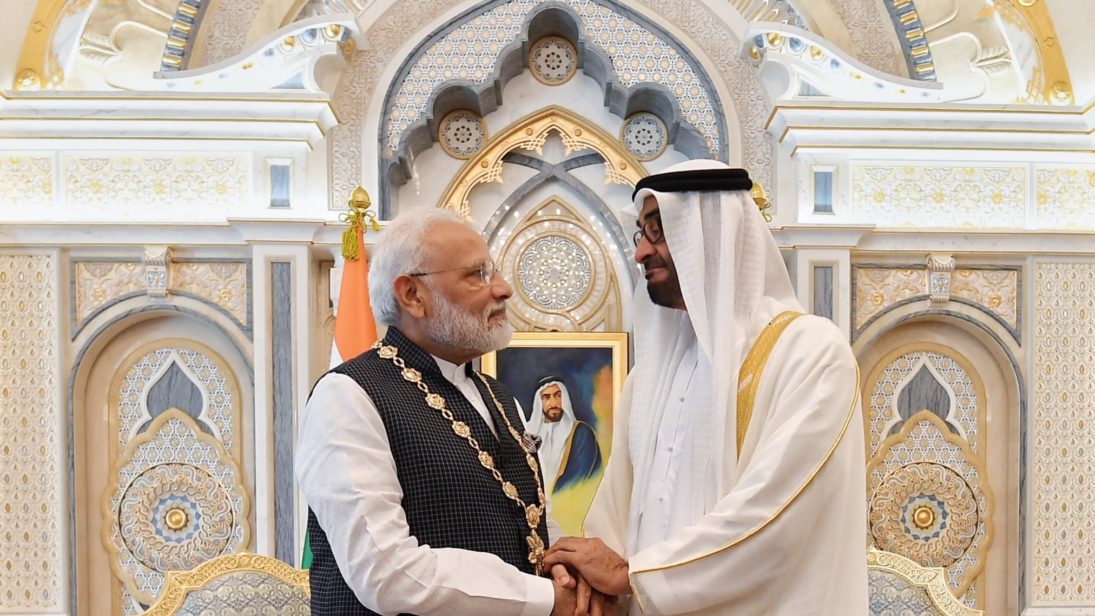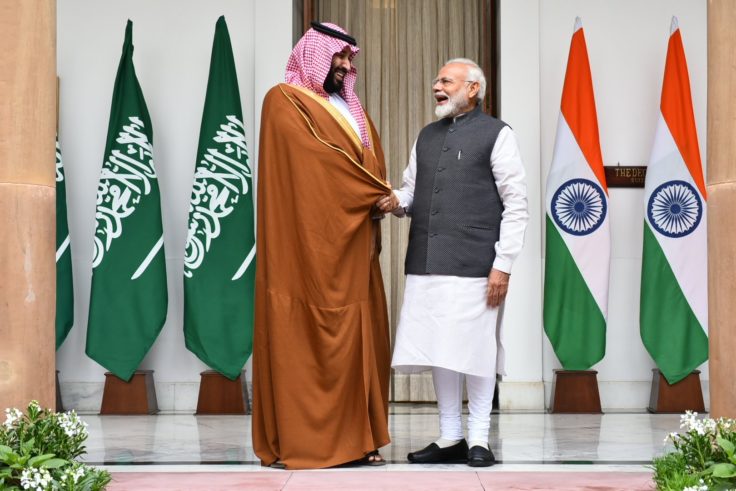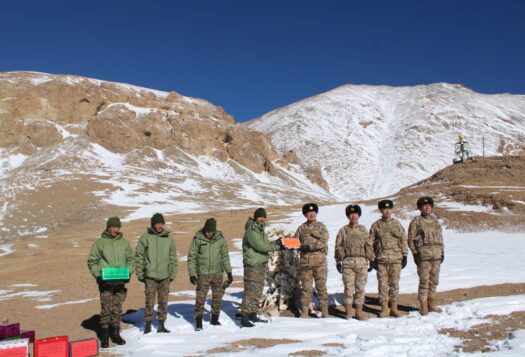
Last month, Crown Prince Mohammed bin Zayed Al Nahyan of the United Arab Emirates (UAE) awarded Prime Minister Narendra Modi the country’s highest civilian honor, the Order of Zayed medal. The fact that this medal was given shortly after the Modi government’s decision to withdraw Article 370 from Jammu & Kashmir and take away the region’s limited autonomy was significant; it followed a decidedly muted reaction from a number of members of the Gulf Cooperation Council (GCC) to India’s move in Kashmir, which had otherwise received public criticism.
International commentators have attributed this measured response on Kashmir to India’s economic power and trade with the Arab Gulf countries, estimated to be valued at around USD $100 billion. While it is true that India’s large economy buys it some leverage with the GCC, there has also been a joint effort effort by several member countries to broaden their relationship with India. Focusing on economic ties alone overlooks the growing strategic importance of India for GCC members, particularly with regard to countering Iran’s influence in South Asia. In particular, Saudi Arabia offers a useful case study of the Gulf’s evolving policy towards India. Saudi-GCC efforts to counter Iran in India have taken two primary forms: increased diplomatic and economic outreach to the government, and spreading their influence among India’s Muslim population. This does not mean that India’s economic strength is unimportant, but rather that there are other factors in India-GCC relations that need to be taken into consideration as well.
More than Economic Opportunism
Saudi Arabia, the UAE, and other Gulf countries have benefited from India’s recent diplomatic outreach to the region and its growing economic clout globally. Modi has made multiple trips to the region, including three visits to the UAE, a trip to Saudi Arabia, as well as the first ever visit to Bahrain by an Indian prime minister. Plans to enhance bilateral trade and investment with India across multiple sectors has helped bolster Saudi Arabia’s “Vision 2030,” and the UAE has also looked to India as a trading partner in non-oil industries. However, Saudi Arabia and the UAE’s burgeoning economic ties with India go beyond economic pragmatism; they also have strategic value for balancing Iran’s role in the region.
India represents both an important energy market economically as well as a country where Saudi Arabia and other GCC countries have a strategic opportunity to fill the void left by Iran due to U.S. sanctions.
Energy remains an important sector in India for the Arab Gulf to push back against Iranian influence. India has robust ties with Iran while Saudi Arabia and the GCC have traditionally been Pakistan’s ally. However, as tensions between Iran and the various GCC countries, especially Saudi Arabia, have heated up, the Arab Gulf has worked to isolate and contain Iran. India’s energy market is a key source of competition, as India was the second-largest customer of Iranian oil until recently. After U.S. pressure forced India to stop Iranian oil imports altogether in May. Saudi Arabia and the UAE quickly stepped in as replacement suppliers.
India represents both an important energy market economically as well as a country where Saudi Arabia and other GCC countries have a strategic opportunity to fill the void left by Iran due to U.S. sanctions. India is expected to be the largest energy growth market in the world by the 2020s, providing ample space for investments by major energy suppliers. In June 2018, the UAE, India, and Saudi Arabia worked to create trilateral oil cooperation to bring stability to global oil prices as the United States restarted sanctions against Iran. The USD $44 billion deal between Saudi Aramco and Abu Dhabi’s National Oil Company (ADNOC) would build a mega refinery in Ratnagiri, Maharashtra. Aramco also plans to purchase a 20 percent stake in India’s Reliance Industries, which would help solidify its access to the Indian market. Despite some delays in implementing these projects, the extent of investments underscores India’s importance for the GCC. Further, by establishing a long-term stake in India’s energy sector, Saudi Arabia can secure its spot in a market where it has competed with Iran.

Winning Over India’s Muslims
For Saudi Arabia, the sentiments of India’s Muslim population are also an important area to counter Iranian influence. It is no secret that India and Iran have traditionally enjoyed cordial relations, much more so than Saudi Arabia and India. Combined with the Persian influences on aspects of Indian culture, Iran has enjoyed an edge over Saudi Arabia as well as maintained its own avenues of influence through some Shia seminaries and organizations throughout India. To counter this, Saudi Arabia has funded Islamic organizations and preachers in the hope that this leaves an ideological foundation to keep the Arab Gulf as the source of influence for Indian Muslims.
According to an Indian Intelligence Bureau report in 2014, the years 2011 to 2013 saw 25,000 Wahhabi preachers from Saudi Arabia come to propagate their teachings in India, accompanied with funding of roughly USD $250 million to set up Wahhabi educations systems in different parts of the country. An investigation by Indian television channel NDTV also found that major donors from the UAE and Kuwait have donated millions of dollars to propagate Salafism throughout India. Saudi Arabia has also financially supported Islamist and Salafi parties in the southern states of India like Kerala, as well as hardline preachers such as Zakir Naik – a televangelist now living in Malaysia and facing charges from New Delhi of money laundering and inciting extremism.
While Saudi funding around the world has received increased scrutiny in recent years due to the worry of fomenting violent extremists, it is important not to exaggerate the effects of Saudi Arabia, Iran, or any other foreign powers on India’s Muslims. Indeed, fears of “Arabization” of India’s Muslims reach farcical lengths each year such as claims that saying “Ramadan” instead of “Ramazan” is proof of radicalization. Despite the funding from GCC countries, some estimates only put the size of Deobandis at 20 percent of India’s Sunni Muslim population, with Salafis at under 5 percent. Nor is it clear how popular Saudi Arbia or Iran are among India’s Muslims.
However, it is clear that Saudi Arabia has been attempting to exert greater influence in India, indicating that its India strategy goes beyond leveraging the country’s economic strength. Bilaterally, Saudi Arabia has also deepened its ties with India through growing defense and counterterrorism cooperation. Connecting with a growing world power and counteracting Iran’s influence in India necessitates an expanding and evolving relationship beyond the thin prism of trade.
It is possible Saudi Arabia may mitigate some pushback through multilateral, although ultimately toothless, statements from international organizations such as the Organization for Islamic Cooperation condemning India’s actions in Kashmir.
But Saudi Arabia’s approach to India’s recent moves in Kashmir shows the dilemma that the country faces. While Saudi Arabia’s muted response to Kashmir might cause discontent in the public sphere, it may be willing to weather the loss in its soft power objectives in the short-term in exchange for preserving its bilateral relations with India in the long-term. Further, it is possible Saudi Arabia may mitigate some pushback through multilateral, although ultimately toothless, statements from international organizations such as the Organization for Islamic Cooperation condemning India’s actions in Kashmir. While this is unlikely to appease the many Muslims concerned about India’s actions, Saudi Arabia’s balancing act does demonstrate the weight the Kingdom places on its relationship with the current Modi government.
Conclusion
India’s relations with key GCC powers like Saudi Arabia and the UAE have transformed in the past decade. While commentators have often focused on the role of the Modi effect or India’s large economy in the establishment a favorable sentiment about India in the Arab Gulf, this analysis overlooks the strategic rationale behind Saudi Arabia and the GCC members’ growing engagement with India. Improvements in India-GCC ties are driven by not only economic opportunities, but also Saudi Arabia and the Arab Gulf’s regional strategies and interest in countering Iranian influence in South Asia.
***
Image 1: MEA India via Twitter
Image 2: MEA India via Twitter


